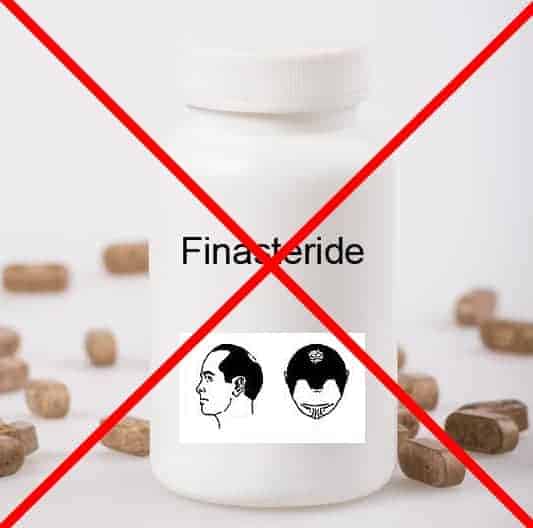Male Hair Loss Causes
 At Feller and Bloxham we completely understand that you are losing your hair and want to get it back QUICKLY. However, in order to do that you must understand HOW you are losing your hair in the first place. In the overwhelming majority of the population it is simply due to genetics, although there are other causes as well.
At Feller and Bloxham we completely understand that you are losing your hair and want to get it back QUICKLY. However, in order to do that you must understand HOW you are losing your hair in the first place. In the overwhelming majority of the population it is simply due to genetics, although there are other causes as well.
Genetic (Hereditary)
Hair loss is not caused by follicles “wearing out” like some old machine. Rather it is through a complex set of preprogrammed biochemical steps that takes both time and energy. What this means is that the body actually goes out of its way to kill and remove its own head hair!
WHY the body engages in this seemingly masochistic activity is pure speculation. However, the way the body goes about doing it is now well known to science. As such this has given physicians the insight needed to not only diagnose male pattern baldness but to effectively treat it through medication and hair transplantation as well.
What makes the unfortunate reality of hereditary balding and hair thinning possible ? DHT and 5 alpha reductase.
What is 5 alpha reductase?
A normal enzyme found in the biochemistry and hormone system of all healthy men.
What is DHT ?
DHT (dihydrotestosterone) is a hormone that starts out as testosterone from the testicle and is converted to DHT through an enzyme called 5-alpha reductase. All men produce DHT which travels through the bloodstream and lands on all the hair follicles of the body (scalp, facial, and body) . If any of these follicles are susceptible to DHT they will begin the dying process.
Which hair follicles in the body are most susceptible to DHT ?
Scalp hair follicles.
Call it a cruel joke or an unfortunate coincidence but that is what nature has decided to hand to a majority of men. But not ALL men…
What makes a hair follicle susceptible to DHT ?
If ALL men typically produce testosterone (which they do) and ALL men have 5-alpha reductase (which they do), then why don’t ALL men go bald ?
The answer is because only follicles whose cells have special DHT receptors on them can be affected by DHT. Hair follicles whose cells do NOT possess such receptors simply ignore DHT and are not affected by it. These lucky men get to keep their thick hair. Think of actors such as Jeff Bridges and Tom Cruise.
What determines who will have DHT receptors on their hair follicles and those who won’t?
Genetics. Period.
Hereditary hair loss, also called Male Pattern Baldness (MPB), refers specifically to the presence or absence of the DHT receptor-NOT the presence of DHT or 5-alpha reductase which all healthy men have.
These receptors are produced by the cells of the hair follicle itself but generally don’t begin doing so until after puberty. That’s why most men enjoy thick mops of hair in their youth and then gradually lose hair as they get older. Some produce receptors in their late teens, others in their mid thirties, and a lucky few never do. Be that as it may, by age 50 over 50% of all men have begun to produce significant amounts of DHT receptors and suffer from MPB.
How do we know when DHT has combined with DHT receptors to start killing our hair follicles? When we see miniaturization.
Hair Miniaturization
This is when the caliber of each individual hair begins to noticeably thin. After the DHT lands on the newly expressed DHT Receptor a signal is sent into the nucleus of the hair follicle cell which tells it to begin shutting down and kill itself. This process is called apoptosis and despite its very unwanted effects it is not pathological or indicative of any health issues. In fact mechanisms like this one are used by the healthy body all the time and is perfectly normal. In terms of hair loss the process may take months or it may take years. This is also genetically determined.
DHT Receptor Distribution
For reasons that have yet to be explained, although extensively theorized upon, DHT receptors seem to focus themselves in progressively expanding patterns. The first kind of hair loss that you probably noticed in yourself was recession of the hairline. Even a man who will not ultimately suffer any hair loss as he ages will experience a noticeable evolution of the hair hairline as he transitions from an adolescent into an adult. This is normal and expected. A responsible hair transplant surgeon should recognize this type of hair loss and not attempt to treat or correct it.
When the hair begins to recede from the mature hairline is when the hair restoration physician should get involved. At this point, not only has the hairline moved up from its adolescent level, but two indentations at the sides of the hairline become more and more prominent producing an M-shaped hairline. This is the classic first sign of baldness in most men.
Alternatively or concurrently, a small hole may open in the crown which increases in diameter with age. In all cases the hair loss was preceded by the expression of new DHT receptors in those bald areas. These patterns were described and classified by Dr. O’Tar Norwood.
Fight Hereditary Hair Loss
Since genetic hair loss involves several mechanisms it stands to reason that if we could somehow disrupt some of the pathways mentioned above that we can reduce or reverse MPB. And in fact we can with one FDA approved drug: Finasteride.
Finasteride, marketed as Propecia, blocks the 5 alpha reductase enzyme that converts testosterone into the dreaded DHT. Seems logical, doesn’t it ? Less DHT means fewer DHT receptors that it can land on to begin the miniaturization cascade. Prevent the DHT from being manufactured and it can’t go into the bloodstream to cause follicular mayhem.
The problem, however, is that healthy men need DHT to be…well… healthy men. DHT is not created by the body solely to make us miserable hair loss sufferers. Rather, DHT plays a major role in normal life function, so minimizing it’s production may not be such a good idea. In fact, the side effects of the use of Finasteride in many men has been a significant decrease in sexual labedo and varying levels of impotence. And these are just the side effects we know about. We simply don’t know if there are other even more important side effects that the purposeful decrease in DHT is causing-and this is why I rarely prescribe it.
The best DHT blocker to my mind would be one that seeks out the DHT receptor on the cell walls of susceptible hair follicles and blocks DHT from being able to attach to it. Now THAT would be a product. Unfortunately nothing like that exists yet. Until then, it is best to allow our genetic programing to play itself out and use other methods, like hair transplants, to get around our hair loss.
Trauma to Scalp
Any kind of trauma to the scalp may cause hair to fall out and could be caused by: auto-accidents, sports mishaps, hot oil spills/spatter, fire, or even surgical procedures of the head and scalp. No matter where the trauma comes from they may generally be broken down into the following three types of injury:
- Blunt Trauma- something hitting your head but not breaking the scalp skin
- Sharp Trauma- Something slicing or stabbing the scalp skin
- Burn Trauma-Scalding liquid-water or oil based
While the trauma itself may injure hair roots to the point that they won’t grow anymore, the body’s response to the trauma may kill yet even more follicles.






